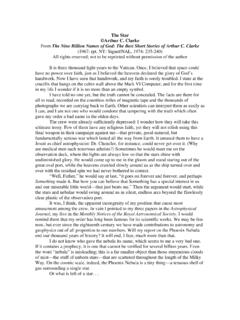Transcription of 60-415 ASSIGNMENT # 2 Solution (SQL DDL and PL/SQL) …
1 60- 415 assignment # 2 Solution ( sql ddl and PL/SQL) Total: 8+5+(3+5+5)+6+6+6+6 = 50 1. The EMP Table Structure Summary EMP_NUM CHAR(3) (Must be a number between 1 and 1000) (Primary Key) EMP_LNAME VARCHAR2(15) EMP_FNAME VARCHAR2(15) EMP_INITIAL CHAR(1) (Must be a char between A and Z EMP_HIREDATE DATE (NOT NULL) JOB_CODE VARCHAR2(10) (Foreign key to Job) The JOB Table Structure Summary JOB_ID VARCHAR2(10) (Primary key) JOB_TITLE VARCHAR2(15) (NOT NULL) MIN_SALARY NUMBER(6) MAX_SALARY NUMBER(6))
2 Given this information, write a script called to answer the following questions: a. Write the SQL code that will create the table structures for Emp and Job . CREATE TABLE emp( emp_num CHAR(3) PRIMARY KEY, emp_lname VARCHAR2(15), emp_fname VARCHAR2(15), emp_initial CHAR(1), emp_hiredate DATE NOT NULL, job_code VARCHAR2(10), constraint check_emp_num CHECK (emp_num between 1 and 1000), constraint check_emp_initial CHECK (emp_initial BETWEEN A and Z ) constraint foreign_key_job foreign key (job_code) references job(job_id) ).
3 CREATE TABLE job( job_id varchar2(10) PRIMARY KEY, job_title varchar2(15) NOT NULL, min_salary NUMBER(6), max_salary NUMBER(6) ); b. Write the SQL statement to add a column STARS(VARCHAR2(5) to the table JOB that has a default value of 1 *. alter table job add stars varchar2(5) default '*'; c. Write a SELECT statement to display the constraints you created. select constraint_type, constraint_type from user_constraints where table_name = &my_table_name; (You can substitute my_table_name for JOB and EMP . Remember to give the table names in CAPITAL letters). d. Solution left to the reader !! 2. Build a PL/SQL block that computes the total compensation for one year.)
4 A. The annual salary and the annual bonus percentage values are defined using the DEFINE command. b. Pass the values defined in the above step to the PL/SQL block through SQL*Plus substitution variables . The bonus must be converted from a whole number to a decimal (For example from 15 to .15) . If the salary is null, set it to zero before computing the total compensation. Execute the PL/SQL block. Reminder : Use the NVL function to handle NULL values . SET VERIFY OFF SET SERVEROUTPUT ON PROMPT ---- ASSIGNMENT 2 Question 2 ---- DEFINE p_salary = 50000 DEFINE p_bonus = 10 DECLARE v_salary NUMBER := v_bonus NUMBER := v_total NUMBER; BEGIN /* NVL function takes 2 arguments a and b - sets the value to b if a is NULL*/ v_total := NVL(v_salary, 0) * (1 + NVL(v_bonus, 0) / 100); ('The total compensation for one year is '||v_total); END; / 3.
5 A. Create a PL/SQL block that selects the maximum department number in the DEPARTMENTS table and stores it in an SQL*Plus variable. PROMPT ----- ASSIGNMENT 2 Question 3a ------- VARIABLE g_max_deptno NUMBER DECLARE v_max_deptno NUMBER; BEGIN SELECT max(department_id) INTO v_max_deptno FROM departments; :g_max_deptno := v_max_deptno; END; / PRINT g_max_deptno b. Modife the PL/SQL block created in that inserts a new department into the DEPARTMENT table. i. use the DEFINE command to provide the department name. Name the new department Education. ii. Pass the value defined for the department name to the PL/SQL block through a SQL*Plus substitution variable. Rather than printing the department number retrieved from , add 10 to it and use it as the department number and the new department.
6 Iii. Leave the location number as null for now. iv. Execute the PL/SQL block v. Display the new department that u created (at the SQL prompt) . PROMPT ------ ASSIGNMENT 2 Question 3b ----- DEFINE p_dname = Education DECLARE v_max_deptno ; BEGIN SELECT MAX(department_id) + 10 INTO v_max_deptno FROM departments; INSERT INTO departments (department_id, department_name, location_id) VALUES (v_max_deptno, '&p_dname', NULL); COMMIT; END; / SELECT * FROM departments WHERE department_name= &p_dname ; b. Create a PL/SQL block that deletes the department that you created in and b. i. Use the DEFINE command to provide the department ID(DEFINE p_deptno=280) ii.
7 Pass the value to the PL/SQL through a SQL*Plus substitution variable. iii. Print to the screen the number of rows affected. PROMPT -- ASSIGNMENT 2 Question 4c --- DEFINE p_deptno = 280 DECLARE v_result NUMBER(2); BEGIN DELETE FROM departments WHERE department_id = v_result := SQL%ROWCOUNT; (TO_CHAR(v_result) ||' row(s) deleted '); COMMIT; END; / 4. Use 3 substitution variables to store an employee number, the new department number and the percentage increase in the salary and Create a temporary table called emp which is a replica of table EMPLOYEES using the following commands : DROP TABLE emp; CREATE TABLE emp AS SELECT * FROM EMPLOYEES; DEFINE P_EMPNO = 100 DEFINE P_NEW_DEPTNO = 20 DEFINE P_PER_INCREASE = 2 Update the department ID of the employee with the new department number, and update the salary with the new salary.
8 Use the EMP table for the updates. After the update is complete, display the message , Update complete in the window. If no matching records are found, display No Data Found. DROP TABLE emp; CREATE TABLE emp AS SELECT * FROM EMPLOYEES; DEFINE p_empno = 100 DEFINE p_new_deptno = 20 DEFINE p_per_increase = 2 PROMPT ---- ASSIGNMENT 2 Question 4----- BEGIN UPDATE emp SET department_id = &p_new_deptno, salary = salary + salary * * &p_per_increase WHERE employee_id = IF SQL%FOUND THEN ('UPDATE COMPLETE'); ELSE ('NO DATA FOUND'); END IF; COMMIT; END; / 5. Create a PL/SQL block to declare a cursor EMP_CUR to select the employee name, salary, and hire date from the employees table.
9 Process each row from the cursor, and if the salary is greater than 15,000 and the hire date is greater than 01-FEB-1988, display the employee name, salary, and hire date in the window in the format shown in the sample output below: . PROMPT ---- ASSIGNMENT 2 Question 5 ---- SET SERVEROUTPUT ON DECLARE CURSOR EMP_CUR IS SELECT last_name,salary,hire_date FROM EMPLOYEES; ENAME VARCHAR2(25); SAL NUMBER(7,2); HIREDATE DATE; BEGIN OPEN EMP_CUR; FETCH EMP_CUR INTO ENAME, SAL, HIREDATE; WHILE EMP_CUR%FOUND LOOP IF SAL > 15000 AND HIREDATE >= TO_DATE('01-FEB-1988','DD-MON-YYYY') THEN (ENAME || ' earns ' || TO_CHAR(SAL)|| ' and joined the organization on ' || TO_DATE(HIREDATE, 'DD_MON_YYYY')); END IF; FETCH EMP_CUR INTO ENAME,SAL,HIREDATE.
10 END LOOP; CLOSE EMP_CUR; END; / 6. a. Create a PL/SQL block that declares a cursor called DATE_CUR. Pass a parameter of DATE data type to the cursor and print the details of all the employees who have joined after that date. DEFINE P_HIREDATE = 08-MAR-00 b. Test the PL/SQL block for the following hire dates: 08-MAR-00, 25-JUN-97, 28-SEP-98, 07-FEB-99. PROMPT ---- ASSIGNMENT 2 Question 6---- DECLARE CURSOR DATE_CURSOR(JOIN_DATE DATE) IS SELECT employee_id,last_name,hire_date FROM employees WHERE HIRE_DATE >JOIN_DATE ; EMPNO ; ENAME ; HIREDATE ; HDATE := '&P_HIREDATE'; BEGIN OPEN DATE_CURSOR(HDATE); LOOP FETCH DATE_CURSOR INTO EMPNO,ENAME,HIREDATE; EXIT WHEN DATE_CURSOR%NOTFOUND; (EMPNO || ' ' || ENAME || ' ' || HIREDATE); END LOOP; END; / 7.








